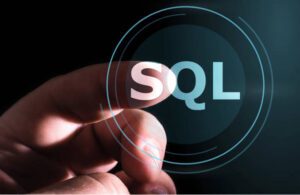我们看到业务分析工作中与数据相关的分析技能有所提高。一些数据技能对业务分析师至关重要,而另一些则更适合其他工作职能 – 例如数据分析师、财务分析师、报告分析师、营销分析师和产品管理。
什么是数据分析?
数据分析是一种深入了解组织数据的技术。数据分析师可能具有以下职责:
创建和分析重要报告(可能使用第三方报告、数据仓库或商业智能系统)以帮助企业做出更好的决策。
将来自多个数据源的数据合并在一起,作为数据挖掘的一部分,以便对其进行分析和报告。
对现有数据源运行查询以评估分析和分析趋势。
数据分析师将可以亲自访问组织的数据存储库,并使用他们的技术技能来查询和操作数据。他们也可能擅长统计分析,具有高水平的数学经验。
此类角色的替代职位包括:报告分析师、数据仓库分析师、商业智能分析师,甚至产品/营销分析师。这组不同职位的共同点是每个角色都负责分析特定类型的数据或使用特定类型的工具来分析数据。
什么是数据建模?
数据建模是一组用于理解和分析组织应如何收集、更新和存储数据的工具和技术。对于参与发现、分析和指定软件系统如何创建和维护信息的更改的业务分析师来说,这是一项关键技能。
数据建模有时需要数据分析
BA 通常需要将数据分析作为制定数据建模决策的一部分,这意味着数据建模可以包括一定数量的数据分析。使用非常基本的技术技能可以完成很多工作,例如运行简单数据库查询的能力。这就是为什么您可能会在业务分析师的职位描述中看到像 SQL 这样的技术技能。
学习统计建模技术
对于那些准备探索统计建模技术并在分析事业中取得进步的人来说,获得分析硕士学位是获得这些技能的最有效方法之一。然而,并非所有分析程序都是平等创建的,Mello 说,因此专业人士在选择程序时有选择性是很重要的。
为了使您在研究生院的经历与您作为分析师的职业目标最好地保持一致,梅洛建议寻找将机器学习纳入课程的课程。随着这一趋势的不断发展,预计越来越多的组织将聘请了解这些系统基础的数据分析师。事实上,机器学习的需求如此之高,以至于那些具有透彻理解的人可以期望获得接近每年 113,000美元的平均工资。
此外,那些拥有数学、计算机科学或工程学士学位,并且 对统计建模有着深刻理解的人——以及支持各种模型的算法和机器学习——可能能够将这种理解运用到数据科学家的职业生涯中。这是提高薪酬潜力的战略举措。
Modelling for Data Analysis FIT2086 数据分析代考案例
1.Maximum Likelihood Estimation
A random variable Yis said to follow an exponential distribution with a rate parameter β, if
P(Y=y|β) = βexp (−βy)
where y > 0 is a non-negative continuous number. Imagine we observe a sample of nnon-negative real numbers y= (y1, . . . , yn) and want to model them using an exponential distribution. (hint: remember that the data is independently and identically distributed).
1. Write down the exponential distribution likelihood function for the data y(i.e., the joint proba- bility of the data under an exponential distribution with rate parameter β).
2. Write down the negative log-likelihood function of the data yunder an exponential distribution with rate parameter β.
3. Derive the maximum likelihood estimator for β
2.Confidence Intervals and p-values: I
A car company runs a fuel efficiency test on a new model of car. They perform 6 tests, and in each test they drive the car until the fuel tank is empty, then calculate the litres of fuel consumed per one-hundred kilometers of distance covered. The observed efficiencies (in litres per 100 kilometers, L/100km) were:
y= (7.87,8.10,9.07,8.83,7.60,8.91).
From previous efficiency experiments the car company has estimated the population standard deviation in fuel efficiency recordings (i.e., the experimental error) to be 0.3 (L/100km). We can assume that a normal distribution is appropriate for our data, and that the population standard deviation of fuel efficiency recordings for our experiment is the same as the population standard deviation of fuel efficiency recordings of previous experiments.
1. Using our sample, estimate the population mean fuel effiency for this brand of car. Calculate a 95% confidence interval for the population mean fuel efficiency and summarise your results appropriately.
2. The car company runs the same set of tests, on the same set of cars, but with a different brand of fuel. The new observed fuel efficiencies (again, in L/100km) were
yB= (7.74,7.74,8.22,7.88,7.85,8.27). The company wants to know if this fuel has made any difference to the fuel efficiency. Again, we can assume the population standard deviation for this new set of fuel efficiency measurements is known to be 0.3L/100km. Using this information, please provide a p-value for testing the null hypothesis that the mean fuel efficiency for the two fuel types is the same. Please interpret this p-value.







